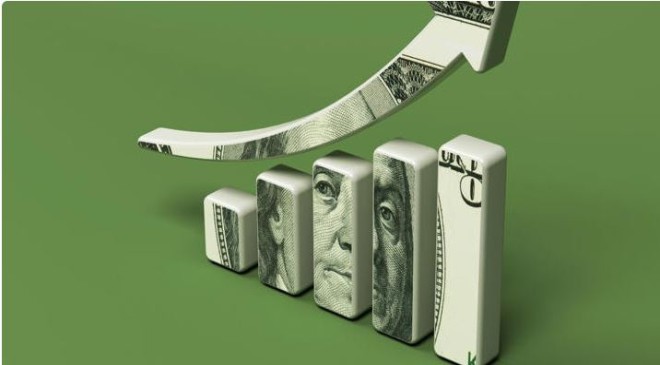The formula for calculating dividend yield is fairly simple: Take the dividend per share and divide it by the current share price to get a percentage. For example, a company trading at $20 per share that pays $1 in annual dividends has a yield of 5%. What that simple math doesn’t always make clear, however, is that the highest dividend-paying stocks out there often reach high yields not by increasing payouts, but by seeing their share prices cut down.
Read More:- 3 Dow Stocks to Sell in June Before They Crash & Burn
If the aforementioned company had been paying that $1 dividend over the previous year at a valuation of $100 per share, investors would have a hard time convincing someone that the stock is better after that massive decline in share price just because of a comparatively higher yield.
This is a long way of saying that dividends are only part of a stock’s value proposition. The 10 highest dividend-paying stocks in the S&P 500 all offer 6% yields or better, but in most cases they have underperformed or even lost ground while the broader market has been pushing higher at a steady clip.
Read More:- 3 Powerhouse Growth ETFs With a History of Outperforming the S&P 500
Investors should always do their own research and take an honest look at their risk tolerance and long-term goals before buying any stock. But that advice is particularly important with this list of troubled but high-yielding S&P 500 components:
| Stock | Trailing annual dividend yield |
| Pfizer Inc. (ticker: PFE) | 5.9% |
| KeyCorp (KEY) | 6.0% |
| Comerica Inc. (CMA) | 6.0% |
| AT&T Inc. (T) | 6.1% |
| Healthpeak Properties Inc. (DOC) | 6.2% |
| Boston Properties Inc. (BXP) | 6.4% |
| Crown Castle Inc. (CCI) | 6.5% |
| Verizon Communications Inc. (VZ) | 6.6% |
| Altria Group Inc. (MO) | 8.5% |
| Walgreens Boots Alliance Inc. (WBA) | 10.7% |
Pfizer Inc. (PFE)
Trailing yield: 5.9%
Pfizer was a darling of the COVID-19 era thanks to the timely development of a much-needed vaccine. But frankly, the stock has seen better days now that the economy and health care sector has moved on. PFE is trading at roughly half its 2021 highs thanks to both the falloff in that pandemic-related business as well as fears that its drug pipeline may be in trouble – particularly given the success of obesity drugs at competitors as its home-grown solution has failed to connect.
Read More:- Major analyst unveils alarming S&P 500 predictions
Its dividend is still stable, however, with a penny-per-share boost in January putting payouts at 42 cents per quarter – about 70% of this year’s forecasted earnings. If you don’t mind a Big Pharma name that isn’t perhaps as dynamic as other drugmakers but has one of the biggest yields of the bunch, Pfizer could be worth a shot. But investors should be honest about where it stands versus its peers.
KeyCorp (KEY)
Trailing yield: 6.0%
Regional banks have been under pressure for a few reasons lately, the most prominent being the much-publicized bank failures last year that sparked uncertainty (and underperformance) for the entire sector. Key is an example of that trend, with shares down more than 20% since the beginning of 2023 while the broader S&P 500 is up more than 40% in the same period.
Read More:- US Stocks Are ‘Overpriced’, Warns Peter Schiff: ‘If You Know You Can’t Do Your Own Homework Then …’
Its 20.5 cents per quarter is good for a big-time yield and is well under its earnings forecasts, but keep in mind that bank runs happen thanks to a crisis of confidence as much as dollars and cents – meaning there are no guarantees for KEY. Furthermore, while shares are up from their 52-week lows they are down 2.5% in 2024 (including dividends) and seem to be riding a short-term downtrend. While the yield is good, keep in mind this stock is not out of the woods just yet.
Comerica Inc. (CMA)
Trailing yield: 6.0%
Comerica is another mid-cap financial firm that has been hurting lately for the same reasons as Key. On the plus side, CMA has a good scale with more than 400 physical branches and annual revenue north of $3 billion. And while earnings are set to drop sharply this fiscal year, from $7.75 in earnings per share for fiscal 2023 to a forecast of $4.96 for fiscal 2024, the annual dividend of $2.84 is still very sustainable at less than 60% of profits. That said, it’s still risky to bet on this sector given recent history, and the rather sudden and unexpected collapse of firms like Silicon Valley Bank last year should be a cautionary tale.
Read More:- The S&P 500 Has Reached Another Record High: 2 Growth Stocks to Buy for the Long Haul
AT&T Inc. (T)
Trailing yield: 6.1%
Long one of the most generous dividend stocks in the S&P 500, iconic telecommunications firm AT&T has been a bit stagnant lately as it deals with competition on the wireless front. But while AT&T’s phone business is struggling, its broadband internet services have seen steady growth, including first-quarter expansion of 7%, to offset these losses.
Besides, that first-quarter report also called for at least $17 billion in cash flow this year – a tremendous cushion for the business and a good foundation for the current dividend as well as potential growth down the road. AT&T is currently paying out just under 60% of its earnings via a 27.75-cent-per-share quarterly dividend, so investors may find confidence in the income stream even if share prices haven’t set the world on fire lately.
Healthpeak Properties Inc. (DOC)
Trailing yield: 6.2%
Previously known as HCP, Healthpeak was already a leading health care real estate firm before a massive merger with Physicians Realty Trust in March of this year. Now, the combined firm owns and operates a diversified portfolio of health care real estate that includes medical office buildings, lab space and retirement communities. If you’re in it for the long haul, there’s perhaps no more likely trend out there than the demographic boom driving an aging population in the U.S. that will need ever-increasing care.
DOC may not be as high octane as biotechnology startups developing the next cancer cure, but it could provide a long-term play on health care that provides a tremendous annualized dividend. It just needs to weather the high interest rate environment that has increased borrowing costs, as well as successfully find the efficiencies it hoped for in its $21 billion merger.
Read More:- Meet the Newest AI Stock in the Dow Jones, and the Stock-Split Stock That Could Join the Iconic Index Next
Boston Properties Inc. (BXP)
Trailing yield: 6.4%
Real estate firm Boston Properties is among the largest publicly held class-A office building operators in the nation with about 50 million square feet across roughly 200 properties. That includes top-tier commercial real estate in markets like its hometown of Boston, as well as Los Angeles, New York, San Francisco and Washington, D.C.
Admittedly, demand for pricey office space isn’t what it used to be thanks to the rise of remote work. However, BXP remains one of the largest and most established players in key markets that are unlikely to see office space completely disappear. There have been rumbles of a potential dividend cut, but payouts have been rock steady at 98 cents a quarter since the end of 2019, despite even pandemic-related disruptions.
Read More:- Oil Prices Drop For Fifth Straight Session, Hit 4-Month Low On Growth Concerns, ‘Bearish’ OPEC+ Meeting
Crown Castle Inc. (CCI)
Trailing yield: 6.5%
Crown Castle has been moving up the list of the highest-dividend S&P 500 stocks, but not for the best reasons. This telecommunications infrastructure provider operates as a real estate investment trust, or REIT, because of its massive property holdings that host 40,000 cell towers and approximately 90,000 route miles of fiber-optic cables across the U.S.
Unfortunately, that real estate empire requires some heavy borrowing and persistently high interest rates have weighed on CCI stock, just as they have on other rate-sensitive REITs. Furthermore, the company’s top line has actually been declining slightly over the last year. The juicy dividend adds up to one of the best yields out there, but shares are down more than 15% this year as a result of these pressures.
Read More:- GameStop, Berkshire Hathaway, Nvidia, SoFi, Tesla: Why These 5 Stocks Are On Investors’ Radars Today
Verizon Communications Inc. (VZ)
Trailing yield: 6.6%
Though telecom giant Verizon has admittedly lagged behind the market lately, alongside AT&T, it is one of the most entrenched dividend stocks out there thanks to the high cost to enter the wireless industry and the long-term nature of customer contracts. Verizon is the largest U.S. wireless carrier by market share, with over 37% of wireless subscriptions and just shy of 145 million customers. Furthermore, Verizon’s debt is slightly smaller than its market value at present, so it’s perhaps better capitalized than rival AT&T if you’re looking to horse race these two high-dividend S&P 500 components.
Altria Group Inc. (MO)
Trailing yield: 8.5%
Often the highest dividend stock in the S&P 500, Altria is a consumer staples brand that has tremendous staying power. Sure, tobacco isn’t exactly a business with exponential growth ahead of it given the health risks. But established MO brands include Marlboro cigarettes, Black & Mild pipe and cigar products, and smokeless tobacco like Copenhagen and Skoal, complemented by newer offerings such as e-cigarettes and oral nicotine pouches.
Read More:- The Stock Market Is Roaring Past Record Highs: The 2 Worst Mistakes Investors Can Make Right Now
The company also made a prominent push into legalized cannabis via a $1.8 billion investment in Cronos Group Inc. (CRON) a few years back. There is certainly risk here, given the nature of its legacy cigarette business. But with a huge dividend yield and a tremendous track record of 55 consecutive annual dividend increases, Altria may offer more regular and generous paydays than some of the other stocks on this list given its long history of dealing with public health perceptions and the slow decline across the tobacco industry.
Walgreens Boots Alliance Inc. (WBA)
Trailing yield: 10.7%
Be careful when you look at Walgreens Boots Alliance’s dividend, as its trailing yield doesn’t take into account its forward outlook. After a disappointing fourth-quarter report, WBA started the year by slashing its payout in half – ending what was previously a 47-year streak of consecutive annual dividend growth. The “good” news is that the firm has also engaged in cost-cutting and a change in the CEO’s office to make the most of its nearly 13,000 locations that operate under Walgreens, Duane Reade and Boots nameplates globally.
Read More:- If You Can Only Buy One Tech Stock in May, It Better Be One of These 3 Names
Shares have tanked over the last 12 months and that has pushed its forward yield – which annualizes the recently slashed dividend payout rather than using the dividends paid over the last year – up to 6.3%. But make no mistake: You will be buying into a turnaround stock, not a financially thriving firm, if you chase WBA for its yield.







































